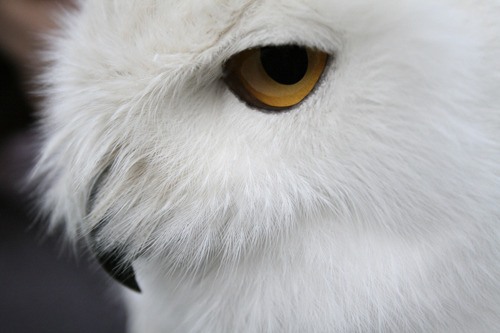The majority of San Juan county residents have never seen a snowy owl in their neighborhood, but as more of these birds are spotted in the region, it may be possible to see white wings gliding through the air.
Snowy owls have been spotted throughout Washington and other states this fall, said Barb Jensen, president of the San Juan Islands Audubon Society.
This irruption, which refers to an abnormally large number of birds, includes snowies spotted in Connecticut, Maine, New York, Vermont, Illinois, Michigan, Minnesota, Missouri and North Dakota.
In Washington, sightings of snowies range from Skagit County to the Pacific Coast.
“It has to do with food,” Jensen said. “They go where the food is.”
Biologists think the owls’ sudden upsurge south from the Arctic occurs when lemmings are in short supply, according to the Washington Department of Fish and Wildlife Service.
Most of the recent sightings are of juvenile snows, so it’s possible the adults snows are kicking younger birds out of their Artic territories, said Jensen.
The snowies will stay in Washington or wherever they find food throughout the winter and head to the Arctic in the spring to breed.
Jensen has only had one unconfirmed report of a snowy owl on San Juan Island in 2011.
“They hardly ever stop here on the islands,” she said. “When we do see them, its most likely in November on American Camp or in San Juan Valley.”
There are reports of at least 10 snowies at Boundary Bay, which is almost directly across from Orcas Island.
But Jensen doesn’t see the islands as an ideal place for snowies – the birds prefer wide open spaces and even pastures in the San Juans don’t harbor many rodents, while other areas are too marsh-like.
Another reason the snowies stay away is that land surrounded by water may be difficult to get to, but Jensen heard of a report of a snowy found on Hawaii in November.
If the birds are doing any island hopping they might head to the south end of Lopez, said Jensen.
Russel Barsh, director of Kwiaht, the Lopez-based Center for the Historical Ecology of the Salish Sea, said he has not heard of any reports of snowy owls on Lopez.
“I used to see them every winter when I lived on Samish Island, though, flying across the flats at night,” Barsh said.
And they are a sight to see. Snowies have striking yellow irises and are the heaviest owls in North America – weighing five pounds – and have a wingspan that can reach nearly 5 feet. Juvenile owls are white with black streaks.
Unlike many other owls, snowy owls are active in the daytime. They tend to perch at high points overlooking sites such as beaches and airports.
“Its pretty amazing,” said Jensen about snowies popping up across the country. “And really interesting.”



